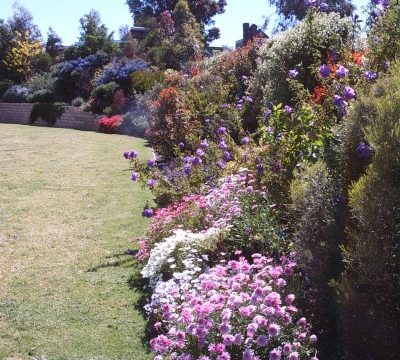Principles Of Design: Part 1
In this article we examine some of the design principles you might think about using when planning your garden – it should give you some food for thought!
Intro: The fact that a design looks attractive is usually not a matter of chance. Visually-pleasing compositions are usually a result of a well thought-out, disciplined effort partially based on a set of Design Principles which apply to all types of design, regardless of materials or scale. They are not hard and fast rules that must be followed to guarantee success. They are however, suggestions to keep in mind as helpful guidelines.
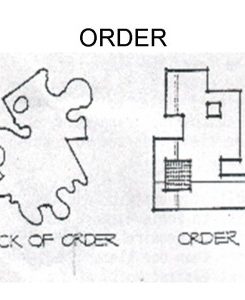
Order can be defined as the overall organisation and structure of the design; i.e. its ‘the skeleton’.
Without order, a landscape design becomes fragmented into unrelated parts that results in a disjointed, uncoordinated appearance. The design should create a theme which carries on throughout the composition. Garden styles are often used to create order throughout a design.
There are far too many materials used in such a small space. This creates an untidy feel.
Try to use a maximum of three hardscape materials in your design.
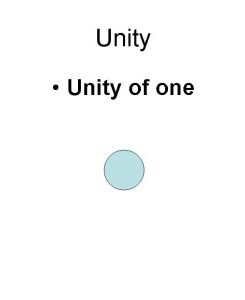
Unity can be defined as the harmonious relationship among all elements and characteristics of a design.
A garden composition lacking unity can be haphazard, chaotic and disorderly. In addition to the overall design, unity can be spoken of in terms of form, material, colour and texture. Unity is a visual quality that may not always be consciously perceived but is always sensed.
The easiest way to establish unity is to limit the complexity and number to one, but many compositions do require using more than one element.
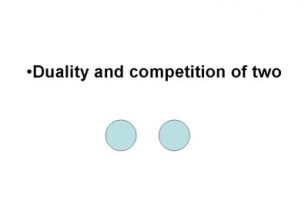
Combinations of two similar elements tend to destroy unity because competition between the two is established.
Your eye can become unsettled because your attention is taken from one element to another, without settling on either. It’s a little like watching a tennis match!
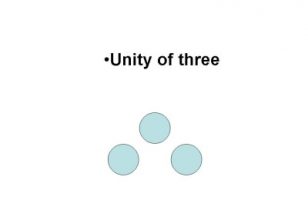
Three elements of the same type balance and equalize one another. The eye does not settle on one element but relates to the cluster as a whole.
That is why plant groupings are usually in threes or other odd numbers. This avoids the competition of two.
Unity and order go hand in hand, and too many various materials and shapes create disharmony.
Maintain unity with shape and texture, create interest by varying size.
Another way to provide unity is to simplify the diversity or differences among the elements.
Too much similarity can be boring. Variety can be created by altering some, but not all of the potential variables.
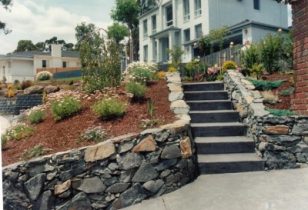
In this example, the colour of the units is the same, but interest has been added by changing their sizes. The stone wall has the same colour
In the background there is a wall with identically-sized blocks, which is not nearly as interesting.
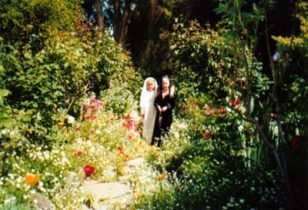
This is part of an Edna Walling garden in Northern Victoria that Clive renovated.
The pavers are the same type, creating unity, while the variety creates interest. Another wonderful factor of gardening comes in here, and that is time.
The pavers all have spring flowering plants planted between them. So over time, the picture changes dramatically. The next photo shows the same garden in spring.
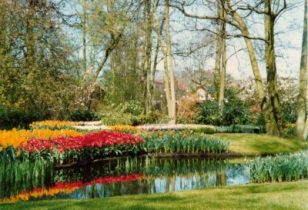
You can also have the same size but create interest by varying other elements.
This is a garden in Holland, and while the size and shape of the flowers are very similar, interest is created through the different flower colours.

Very similar to the unity of one. Due to the dominant element’s size, shape, tone, texture or location, all other elements are subordinate.
The eye is continually drawn back to the dominant element, usually known as the focal point.

What is the dominant element? You will probably notice the Phormium tenax (Flax) as the most dominant in this composition.
This can also be classed with major contrast where one element is so strikingly different that the other elements become subordinate. Architectural plants tend to have this effect.
There are two dominant elements in this composition. The first is the sculpture in the foreground. It dominates the smaller elements around it.
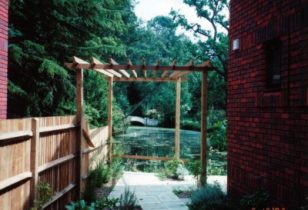
The conifer in the background is the dominant element because it has more visual weight.
The pergola in this slide was constructed with wider posts near the house and narrower ones near the lake. This creates perspective and leads the eye to the bridge in the background.
This is also known as “framing the view”, where you deliberately plant or construct something to lead the eye where you want it to go.
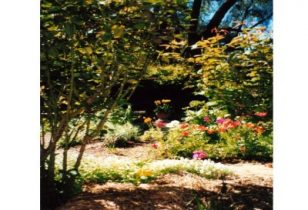
The yellow tulips surrounded by the dark shadow draw the eye.It is here that we again can see the importance of visual weighting. This is not measured in terms of size or mass, but rather how the object draws our visual attention.
Repetition
Repetition is the technique of using element, size, form or texture throughout a composition. It provides a common tie or visual link amongst the various parts.
The replication of the Camellia hedges at the Art Center in Melbourne creates repetition throughout the garden design.
The repetitive use of the Agapanthus in front of the house helps to also create unity.
Interconnection
Interconnection is a technique for producing unity by physically linking various elements of the composition together. In this diagram element F has been introduced to join the individual elements in a formal way, while the next slide shows informal interconnection.
Joining elements makes a more pleasing composition. The eye seems to travel more easily rather than stopping on each individual shrub. By connecting plants, you create a more cohesive composition with the eye taking the scene in as a whole, rather than having the plants compete for your attention individually.
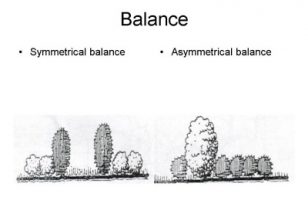
Balance is the equalisation of visual weight from one part of the composition to another. Size, colour and quantity of elements are major considerations for balance. There are two types of balance, symmetrical and asymmetrical.
Symmetrical balance is the repetition of garden design elements from one side of the composition to the other. This is most appropriate with formal designs.
Asymmetrical balance is created by implying equal visual weight on either side of the composition, without actual repetition. This style of design is most compatible with informal designs.
This picture of a garden in Hampton Court shows a formal, symmetrically-balanced layout. The large mix of colours of the plants however, takes away from the feeling of balance. I call this “chocolate box” gardening because it reminds me of the old chocolate box lids with masses of flowers in random, and often clashing, results.

